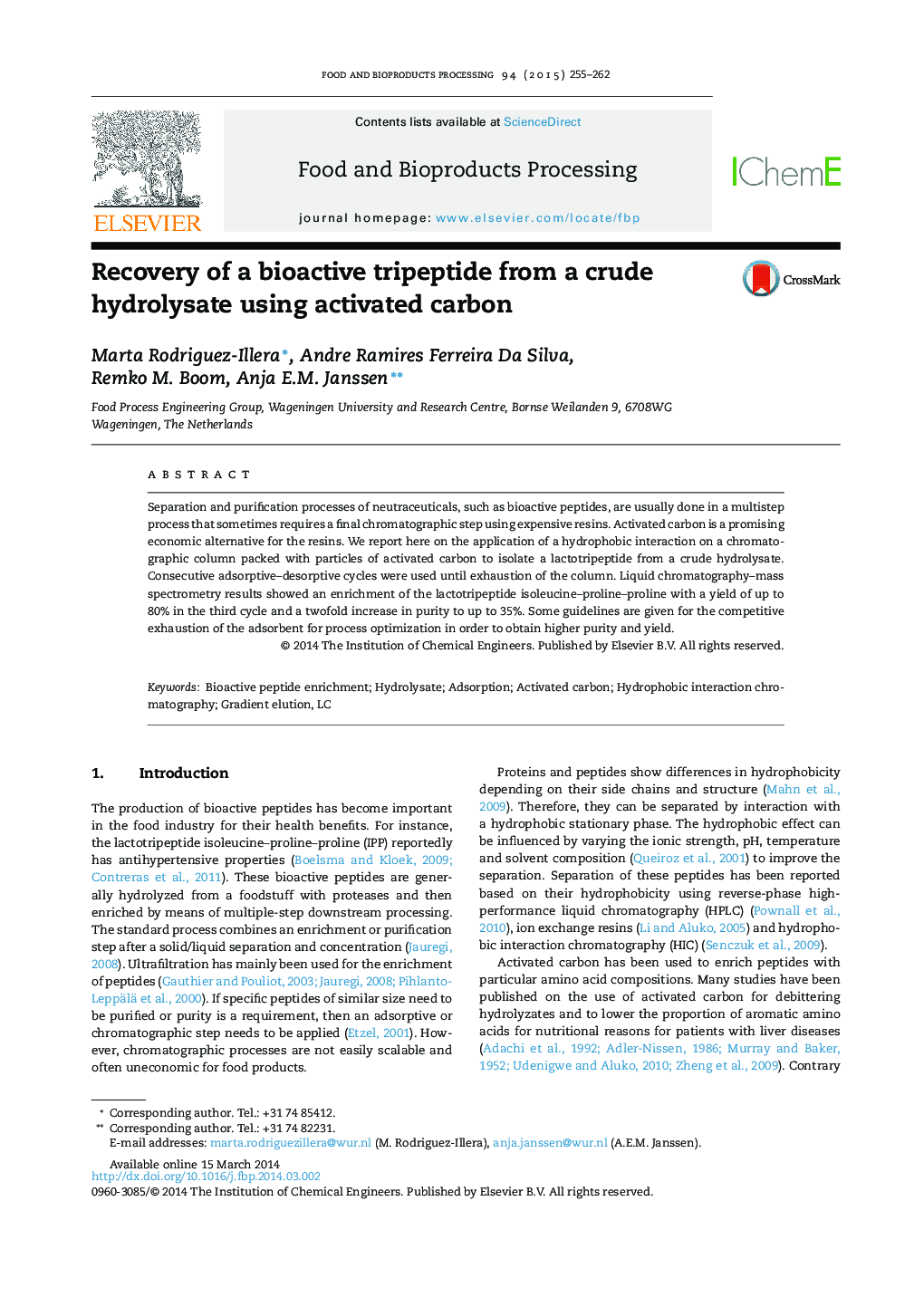| کد مقاله | کد نشریه | سال انتشار | مقاله انگلیسی | نسخه تمام متن |
|---|---|---|---|---|
| 18916 | 43037 | 2015 | 8 صفحه PDF | دانلود رایگان |

• Enrichment of a single bioactive peptide using activated carbon.
• Adsorption process described for several adsorptive−desorptive cycles.
• Gradient elution and peak fractionation during desorption lead to purity increase.
• Guidelines for more suitable activated carbon characteristics have been deduced.
Separation and purification processes of neutraceuticals, such as bioactive peptides, are usually done in a multistep process that sometimes requires a final chromatographic step using expensive resins. Activated carbon is a promising economic alternative for the resins. We report here on the application of a hydrophobic interaction on a chromatographic column packed with particles of activated carbon to isolate a lactotripeptide from a crude hydrolysate. Consecutive adsorptive–desorptive cycles were used until exhaustion of the column. Liquid chromatography–mass spectrometry results showed an enrichment of the lactotripeptide isoleucine–proline–proline with a yield of up to 80% in the third cycle and a twofold increase in purity to up to 35%. Some guidelines are given for the competitive exhaustion of the adsorbent for process optimization in order to obtain higher purity and yield.
Journal: Food and Bioproducts Processing - Volume 94, April 2015, Pages 255–262